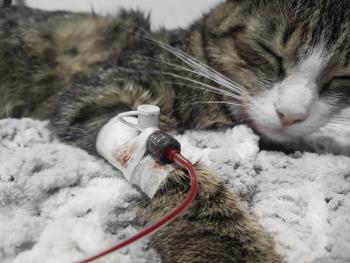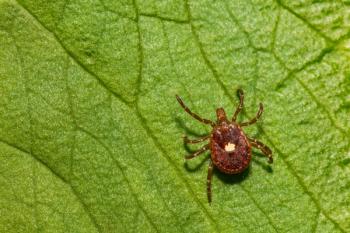
Description of a Feathered Dinosaur Tail Fossilized in Mid-Cretaceous Amber
In a recent study, researchers provided a detailed description of a feathered dinosaur tail with primitive plumage that was preserved in amber from the mid-Cretaceous period.
In a study recently published in Current Biology, researchers presented new findings on the morphology and evolution of a feathered non-avialan (non-flying) dinosaur tail with primitive plumage that was preserved in mid-Cretaceous amber.
Feathered dinosaurs were first discovered in the 1990s. Although this discovery has significantly improved our understanding of the evolution and success of birds, several challenges have made feather analysis and taxonomic classification difficult. For example, feathered tails fossilized in sedimentary rocks have been compressed, not allowing for detailed three-dimensional analysis of feather morphology. Fossilization of feathered tails in amber allows for detailed structural analysis; however, because skeletal material in amber is not always identifiable, taxonomic classification based on plumage has proven to be challenging.
The Cretaceous period lasted approximately 79 million years, from the end of the Jurassic period 145 million years ago to dinosaur extinction 65 million years ago. The feathered dinosaur tail described in this study was from a non-avialan theropod (carnivorous dinosaur) that lived during the mid-Cretaceous period, approximately 99 million years ago.
The fossilized feathered tail section was approximately 3.7 cm long and gently curved. Synchrotron radiation (SR) X-ray phase-contrast microtomography (µCT) revealed close contact between soft tissue and bone, indicating desiccation commonly seen in vertebrate fossils preserved in amber. The soft tissues were visible as carbon film. Using SR micro-X-ray fluorescence imaging, researchers identified iron in the carbonized soft tissues, suggesting that “organic components were trapped early and remained undisturbed by subsequent events.”
Researchers also used SR X-ray µCT to analyze the feathered tail’s osteology. However, because the density of the skeletal elements and soft tissue were similar, many osteologic details could not be evaluated. Two elongated tail vertebrae were observed ventrally, but likely lacked such features as transverse processes and hemal arches. Observing these vertebrae, researchers estimated the tail section contained at least 8 full vertebrae, with the entire tail potentially containing over 25 vertebrae. Given the vertebral characteristics, researchers suggested the tail belonged to a juvenile non-avialan coelurosaur (theropod).
SR X-ray µCT and standard light microscopy allowed for detailed analysis of the tail plumage. Tail feathers resembled each other morphologically, regardless of tail position. They were also pennaceous, meaning they contained a central shaft (“rachis”), with branches (“barbs”) extending out from the shaft. The rachis was weakly developed; each barb contained blade-shaped barbules that were closely and evenly spaced. Interestingly, the barbules also branched directly from the rachis, which occurs in the feathers of modern birds.
Even though osteologic tail features suggested a juvenile dinosaur, the plumage resembled that of an adult, indicating the “feathers would not have been replaced by different morphotypes in subsequent molts.” In addition, given the observed tail flexion within the amber, researchers suggested the rachis and barbs were somewhat flexible, indicating the tail feathers were potentially ornamental rather than used for flight.
According to the researchers, the weakly pennaceous feather arrangement represented a novel combination of feather development among theropods. This combination does not fit within defined stages of theropod feather development, including 3a (rachis with naked barbs), 3b (barbs with barbules, no rachis), and 3a+b (barbs with barbules, strongly developed rachis). Given this novel combination, researchers believed it was possible that “non-avialan theropods had a greater variety of feather forms than predicted from developmental phenotypes in modern feathers.”
Slight coloration was observed within the tail plumage. Although individual feathers did not vary significantly in coloration, the dorsal plumage was much darker than the ventral plumage; the coloration suggested chestnut brown dorsal plumage and pale to white ventral plumage. Because no melanosomes were observed, the pale to white plumage was due to either lack of pigmentation or another source of pigmentation, such as carotenoids.
In light of the study’s findings, researchers highlighted the unique preservation potential of amber, allowing for detailed evaluation of coelurosaurian tail feather morphology, arrangement, and evolution.
Dr. JoAnna Pendergrass received her doctorate in veterinary medicine from the Virginia-Maryland College of Veterinary Medicine. Following veterinary school, she completed a postdoctoral fellowship at Emory University’s Yerkes National Primate Research Center. Dr. Pendergrass is the founder and owner of JPen Communications, LLC.
Newsletter
From exam room tips to practice management insights, get trusted veterinary news delivered straight to your inbox—subscribe to dvm360.




